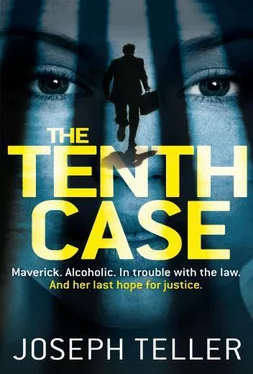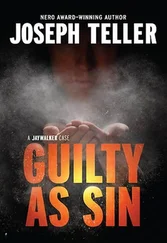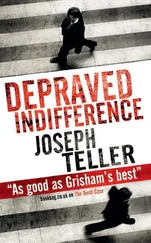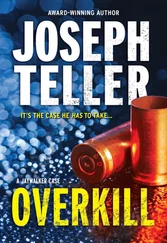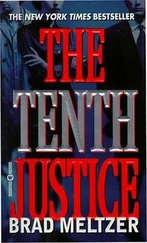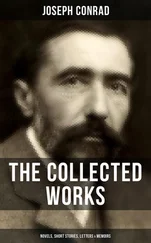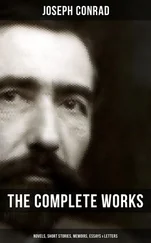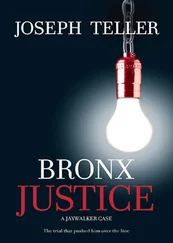Joseph Teller - The Tenth Case
Здесь есть возможность читать онлайн «Joseph Teller - The Tenth Case» — ознакомительный отрывок электронной книги совершенно бесплатно, а после прочтения отрывка купить полную версию. В некоторых случаях можно слушать аудио, скачать через торрент в формате fb2 и присутствует краткое содержание. Жанр: Криминальный детектив, на английском языке. Описание произведения, (предисловие) а так же отзывы посетителей доступны на портале библиотеки ЛибКат.
- Название:The Tenth Case
- Автор:
- Жанр:
- Год:неизвестен
- ISBN:нет данных
- Рейтинг книги:3 / 5. Голосов: 1
-
Избранное:Добавить в избранное
- Отзывы:
-
Ваша оценка:
- 60
- 1
- 2
- 3
- 4
- 5
The Tenth Case: краткое содержание, описание и аннотация
Предлагаем к чтению аннотацию, описание, краткое содержание или предисловие (зависит от того, что написал сам автор книги «The Tenth Case»). Если вы не нашли необходимую информацию о книге — напишите в комментариях, мы постараемся отыскать её.
The Tenth Case — читать онлайн ознакомительный отрывок
Ниже представлен текст книги, разбитый по страницам. Система сохранения места последней прочитанной страницы, позволяет с удобством читать онлайн бесплатно книгу «The Tenth Case», без необходимости каждый раз заново искать на чём Вы остановились. Поставьте закладку, и сможете в любой момент перейти на страницу, на которой закончили чтение.
Интервал:
Закладка:
Then again, what was Jaywalker really doing here? Hoping for the cops to screw up? Waiting for manna to fall from the heavens? It seemed so.
They broke for lunch.
That afternoon Burke led off with Detective Anne Maloney. Maloney was assigned to the Crime Scene Unit, a fact that immediately grabbed the attention of the jury. Having labored for years in almost total obscurity, CSU had almost overnight become the darlings of the department. The agent of change, of course, had been the television set. Programs like CSI, along with myriad spinoffs and com petitors, had thrust the unit into the forefront of police work. These days, if you were to canvas a roomful of twelve- to fourteen-year-olds, you'd likely find that of all the careers the youngsters aspired to, crime scene technician outpolled its nearest competitor by a margin of twenty to thirty per centage points. Kids no longer wanted to be doctors, movie stars, shortstops, firemen or forest rangers; they wanted to be David Caruso or Marg Helgenberger. (Assuming, of course, that they couldn't be the next F antasia.)
Detective Maloney was no American Idol. Plain and a bit on the stocky side, with a pageboy haircut straight out of the fifties, she was all business. She and fellow members of her unit had arrived at the scene at, as she put it, "fourteen forty-five hours." Translated for the jury, that was a quarter of three in the afternoon. She'd found that the apartment had been secured by two uniformed patrol officers, who'd es tablished a crime scene, indicated by the presence of familiar yellow-and-black tape at the door to the apartment.
Inside, things had seemed quite orderly, with two excep tions, both in the kitchen. First, there were a half-dozen half-empty cartons of Chinese food spread out on the coun tertop. And then there was the floor. On it was a body, sub sequently identified as that of Barry Tannenbaum.
MR. BURKE: Can you describe the condition of the body for us?
DET. MALONEY: It was dead.
Her understatement drew a few nervous snickers from the jury box.
MR. BURKE: I was actually hoping you could give us a little more detail.
The snickers erupted into laughter. Burke had a nice way of putting jurors at ease. That said, Jaywalker had no doubt that he'd planted that little bit of comic relief, even if he hadn't bothered telling his witness what he was doing.
Jaywalker knew that because, from time to time, he did the same thing with his own witnesses.
DET. MALONEY: The body was lying facedown, bent into a sort of fetal position. A significant amount of dried blood was visible underneath it.
MR. BURKE: Did you check for a pulse, or other vital signs?
DET. MALONEY: No. That had already been done, with negative results.
MR. BURKE: Did there come a time when you turned the body over?
DET. MALONEY: Yes. After photographing the body in the exact position we found it in, we turned it over.
MR. BURKE: And what, if anything, did you observe at that time?
DET. MALONEY: We observed
MR. JAYWALKER: Objection.
THE COURT: Yes, sustained. You can tell us only what you yourself observed.
DET. MALONEY: I observed a large area of what appeared to be a bloodstain on the front of the victim's clothing.
At this point Burke walked to the prosecution table and retrieved a large brown paper bag. Returning to the lectern, he withdrew an item and handed it to one of the uniformed court officers, who in turn placed it in front of the witness.
MR. BURKE: I show you what has been marked People's One for identification, and ask you if you recognize it.
DET. MALONEY: Yes, I do.
MR. BURKE: And what is it?
DET. MALONEY: It's a white cashmere sweater, the outer garment Mr. Tannen baum was wearing.
MR. BURKE: How do you recognize it?
DET. MALONEY: From the large stain on the front of it. Also, these are my initials, A.L.M. I wrote them on the label that day, in ink.
Burke repeated the process with the inner garment, a long-sleeved beige turtleneck. The stain on it was even larger than the one on the sweater. Both stains were almost black in color, with only a suggestion of red around the edges.
After photographing and examining the body, Maloney had conducted a search of the apartment, finding nothing remarkable and nothing out of place. There'd been no signs of a forced break-in, and nothing to suggest a burglary. From the absence of bloodstains anywhere else in the apartment, she'd been able to conclude that the victim had been killed right where he'd fallen.
Maloney had taken a series of photographs, which Burke now entered into evidence. She'd made measure ments and drawn a rough sketch, which she'd later enlarged into a poster-sized diagram, also received in evidence. She'd also dusted the apartment for fingerprints, paying particular attention to the Chinese food containers and the area around the doorknob to the entrance. She'd succeeded in lifting several latent prints, and she'd photographed several others. She'd also taken the fingerprints of the victim and the two uniformed officers, so their prints could be ruled out when comparisons would later be made.
Next, Burke had Maloney describe how she'd collected a number of hairs and fibers from the body and clothing of the victim. She'd retrieved each one with tweezers, inserted each into an individual plastic bag, and marked each bag with the specific location where the enclosed evidence had been found. Later, she'd catalogued the items and turned them over to the Criminal Identification Division for analysis.
Burke asked Maloney if her search of the apartment, or any of the areas surrounding it, had turned up anything in the way of a possible weapon. No, she replied. Along with other CSU members, she'd combed the hallway, the elevator bank, the trash area, the rooftop and even the air shafts and ground level beneath the apartment, all without finding a knife or similar instrument that might have been used in the murder.
Burke was finished with the witness, but before turning her over to Jaywalker for cross-examination, he asked Judge Sobel for permission to "publish" the diagram and the pho tographs. The judge agreed, and an easel containing the diagram was placed directly in front of the jury box, so that the jurors could see it. They leaned forward to look at it, but gave no sign that they were overly impressed with it.
The photographs were a different matter.
Prior to jury selection, Jaywalker had fought hard to keep them out. The worst of them showed Barry Tannen baum, lying facedown and slightly curled up, in a puddle of what looked like very, very dark red paint. In one par ticular photo, the body had been turned over to reveal a large stain of the same color on the chest area of Barry's otherwise white cashmere sweater. Jaywalker had lost the fight, and although he'd made a point of describing the photos during jury selection and eliciting the jurors'assur ances that they wouldn't be overwhelmed when they saw them, he now heard audible groans from the jury box. Death had a way of doing that, he knew. Especially gruesome death, recorded in glossy, 81/2 x 11" living color.
On cross-examination, Jaywalker asked Maloney if she'd fingerprinted Mr. Mazzini, as well.
DET. MALONEY: Who?
MR. JAYWALKER: Mr. Mazzini, the building superintendent.
DET. MALONEY: I didn't see any building superintendent.
MR. JAYWALKER: The officers didn't tell you he'd had the run of the apart ment for half an hour?
MR. BURKE: Objection to "run of the apart ment."
THE COURT: Sustained.
MR. JAYWALKER: Did the officers tell you that the super had let them in?
DET. MALONEY: Not that I recall.
MR. JAYWALKER: And that he'd remained in the apartment for a good half an hour?
DET. MALONEY: No.
MR. JAYWALKER: During which time he'd walked from room to room?
Читать дальшеИнтервал:
Закладка:
Похожие книги на «The Tenth Case»
Представляем Вашему вниманию похожие книги на «The Tenth Case» списком для выбора. Мы отобрали схожую по названию и смыслу литературу в надежде предоставить читателям больше вариантов отыскать новые, интересные, ещё непрочитанные произведения.
Обсуждение, отзывы о книге «The Tenth Case» и просто собственные мнения читателей. Оставьте ваши комментарии, напишите, что Вы думаете о произведении, его смысле или главных героях. Укажите что конкретно понравилось, а что нет, и почему Вы так считаете.
